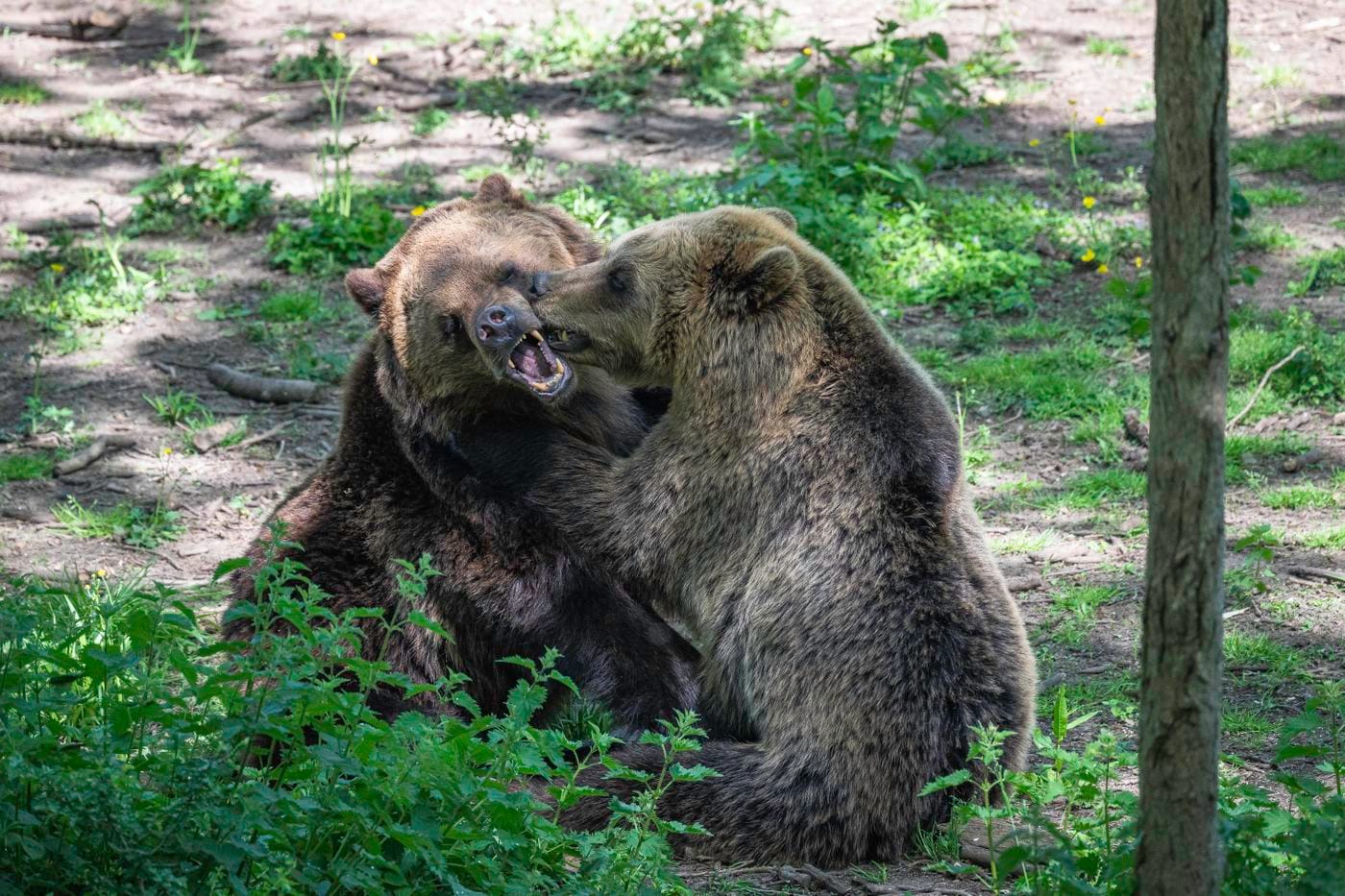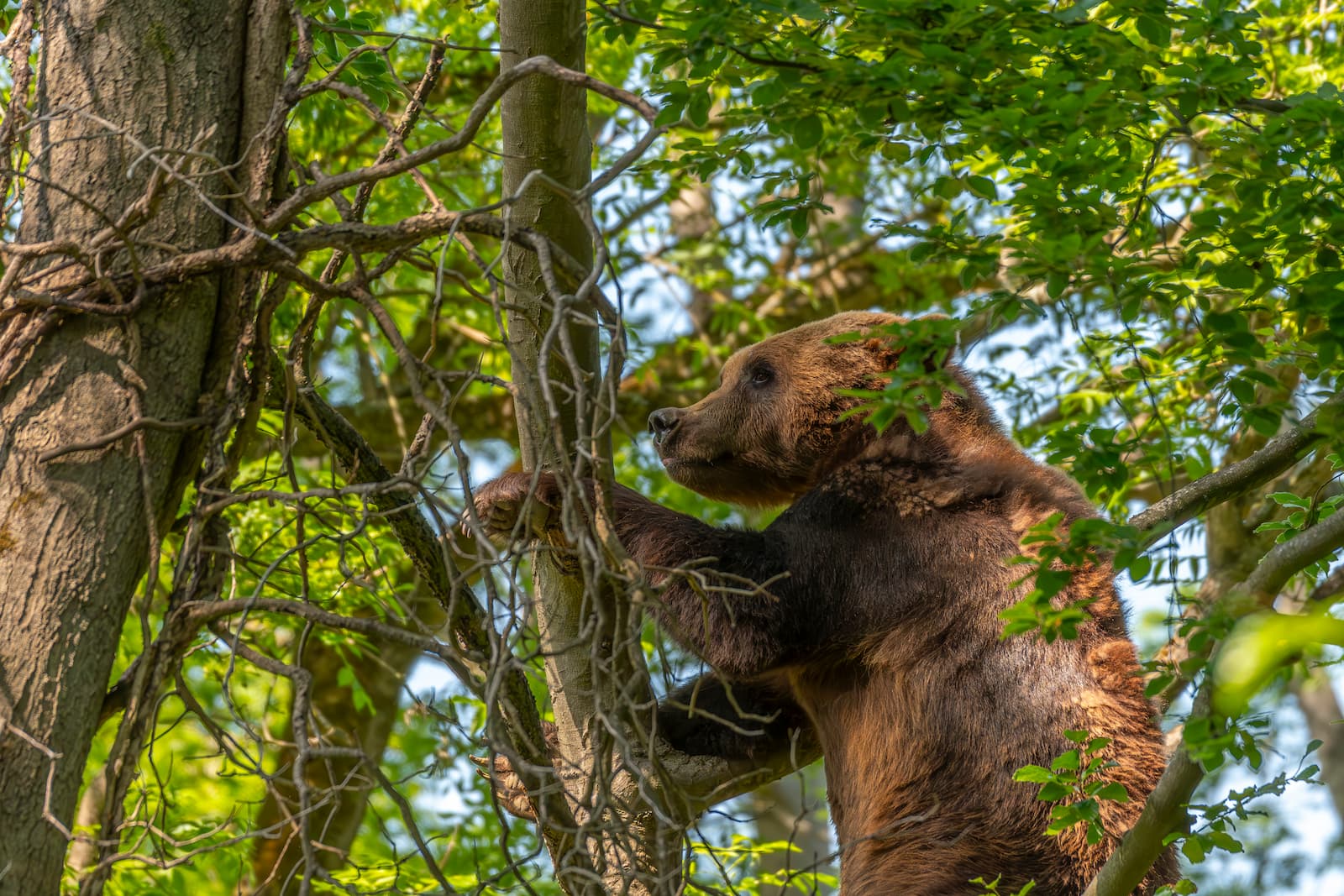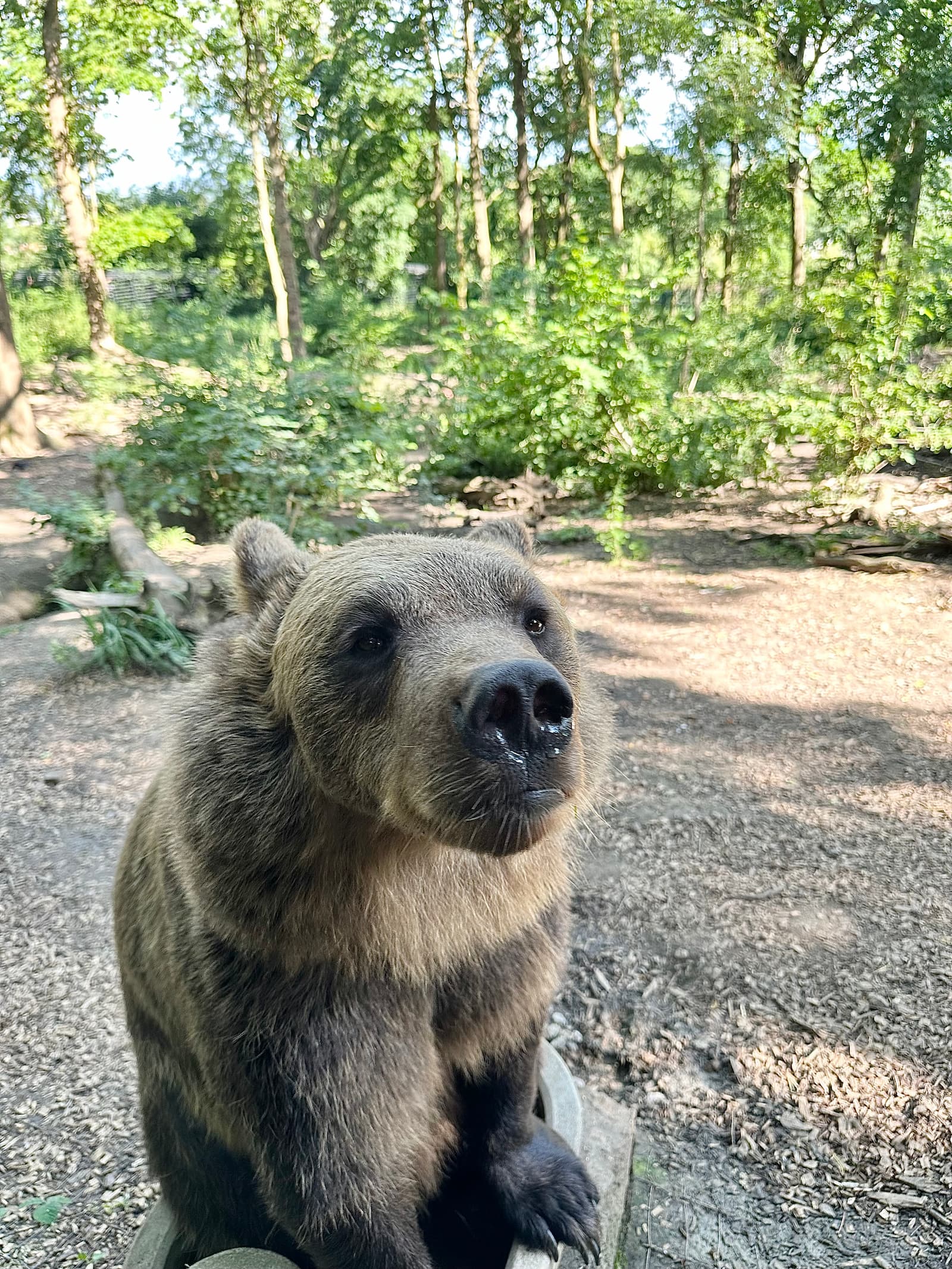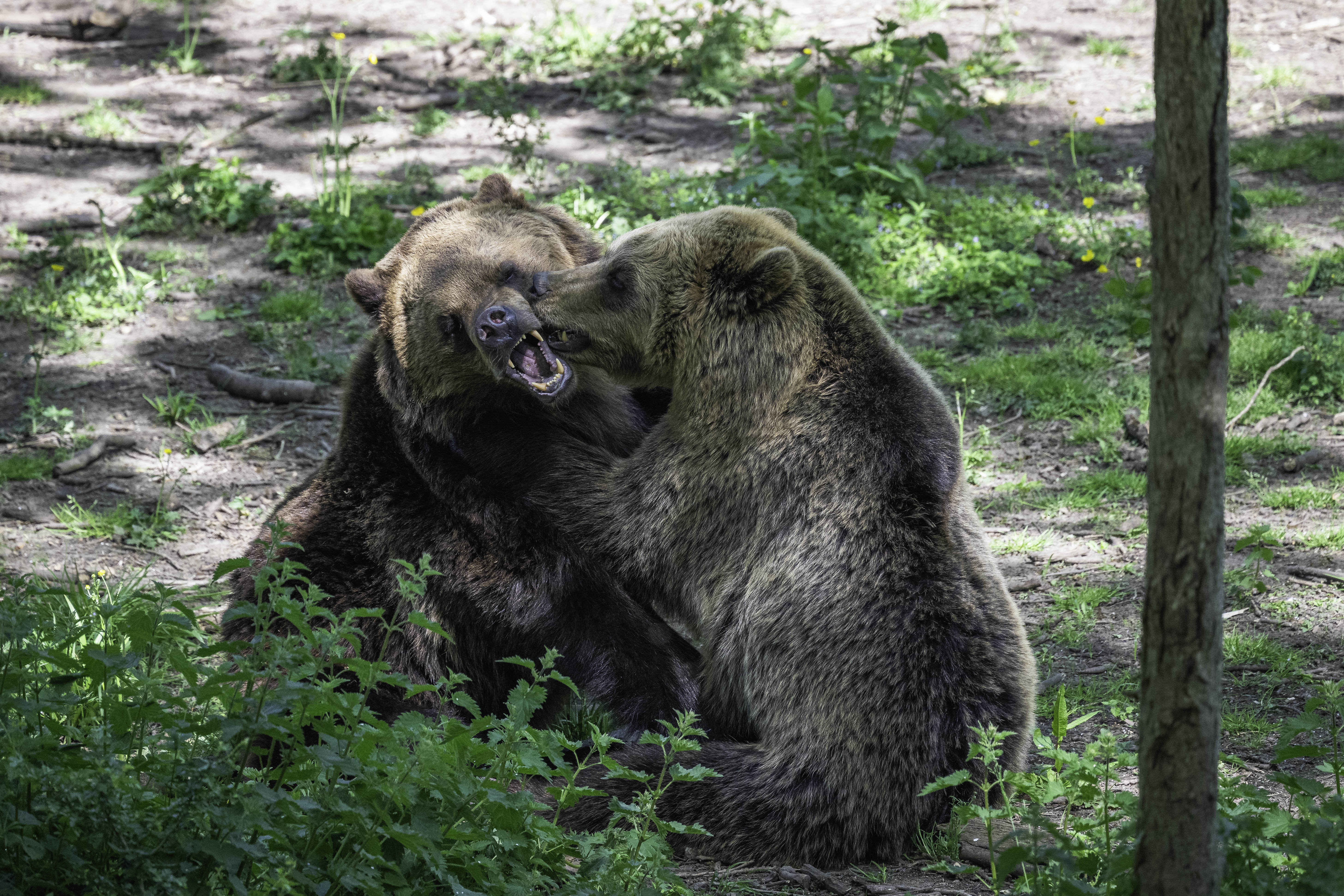
7 interesting facts about brown bears
Posted on: 12 June, 2025
Nature regenerators who are large, speedy, and brainy... brown bears are fascinating and imperative to the ecosystems of mainland Europe.
There are around 20,000 brown bears in Europe, from Romania to Spain and France, but there’s a lot you might not know about them. Bear Wood at Bristol Zoo Project is home to four European brown bears. Learn more about how we care for our four bears and discover more about their cousins in the wild.
 1. Brown bears are the largest predators living in Europe
1. Brown bears are the largest predators living in Europe
Brown bears are one of the largest land predators in the world, coming in second to their sister species, the polar bear. They are also the largest predators living on mainland Europe. As omnivores, 80% of their diet is mostly plant-based, including fruit, nuts, berries, leaves, tree bark, and they will top this up with the occasional bit of meat, including fish, insects, small rodents, and even larger prey such as deer through opportunistic hunting or scavenging. Our bears live in Bear Wood at Bristol Zoo Project, an ancient woodland habitat that they share with our European grey wolves, which is perfect for foraging and is home to a wide range of browse that grows naturally.
2. European brown bears are prolific seed dispersers
Due to their diet, which is high in fruit, they play a vital role in plant survival and regeneration through seed dispersal. There are two ways they can disperse seeds: firstly, by eating and then excreting the seeds, and secondly, by carrying them around on their fur, and when they land elsewhere, they can recolonise and begin to grow again. This, amongst a number of other factors, has been hugely beneficial to the regeneration and native species in Bear Wood, as we have seen a 23 percent increase in ground flora since it was created in 2019.
3. Brown bears have an excellent sense of smell
European brown bears have an acute sense of smell, which is thought to be one of the sharpest in the animal world, alongside African elephants, lions, and bloodhounds. This strong sense of smell is crucial for locating food, potential dangers, and seeking a mate. Each individual has their preference for the scents they enjoy, and of our four who live here at Bristol Zoo Project, Albie enjoys the more pungent ones the best, seeking out the smelliest herbs he can, but it is our female Gemini who leads the most with her nose, strongly reacting to any scent we use for enrichment - she always gets in there before the boys!
 4. European brown bears are usually solitary animals
4. European brown bears are usually solitary animals
Brown bears are solitary animals, except for females with cubs, and only seek a mate for short periods during the mating season, which usually occurs between May and July. They tend to stick to their habitat and have their own territory, which can occasionally overlap. They can sometimes be seen gathering in larger numbers around important food sources.
5. Bear cubs are usually born in the middle of hibernation season
After the mating season, males and females will go their separate ways, but a fertilised egg can remain in the female for up to five months, implanting itself at the beginning of hibernation, which occurs around October. Brown bears then give birth in their sleep around January or February. Cubs that are born during hibernation nurse from their mother until she is ready to wake up. A litter of cubs will usually be two or three, and they will stay with their mother until around three or four years old.
6. Brown bears are speedy
Despite their size, European brown bears are surprisingly speedy and are known for their agility. They can gallop at speeds over 35 mph. This could come as a surprise as they can weigh anything between 100-400 kg, depending on the time of year (our biggest male, Neo, weighed 372 kg before hibernation last year), and grow to a height of 2.2 metres when standing upright. They are also exceptional diggers, climbers, and swimmers. Is there anything they can’t do?!
 7. Brown bears are brainy
7. Brown bears are brainy
Brown bears have the largest brain-to-body weight ratio of any carnivore, which contributes to their advanced cognitive and problem-solving skills. This helps them to adapt to diverse habitats, a range of foraging behaviours in different environments, as well as the use of tools. We see some of this bear-y clever behaviour in our four resident bears here at Bristol Zoo Project during different enrichment activities throughout the year, which include puzzle feeders made from logs, firehose, drainpipes or specially constructed wooden boxes; scent trails using honey, peanut butter, blood etc; ice blocks with food frozen inside; scents like perfume or spices on hessian sacks; used bedding from other animals, particularly hoofstock.
 Visit our European brown bears, brothers Neo and Nilas, and brother and sister Albie and Gemini, in Bear Wood alongside our wolves, lynxes, and wolverines.
Visit our European brown bears, brothers Neo and Nilas, and brother and sister Albie and Gemini, in Bear Wood alongside our wolves, lynxes, and wolverines.
Bristol Zoo Project is run by Bristol Zoological Society, a conservation and education charity. Every visit supports our conservation work in the UK and around the world.

Want to help us save wildlife?
Become a member today for a year of wild adventure, and help protect the animals and habitats you love by supporting our conservation charity.

